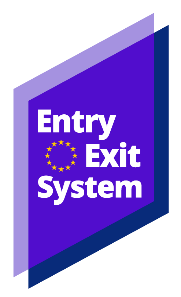In accordance with the Italian law on the communication to, and entry and stays of, foreign nationals in Italy, pursuant to Art. 2 6 ad 9, Art 4 and 5 of Legislative Decree of 25 July 1998, n. 286 (consolidated act of the regulations concerning immigration and the laws on the condition of foreign nationals) , in accordance with art. 5, comma 8-bis of the Decree of the President of the Republic n. 394 of 1999 and, with regard to entry and circulation within the Schengen area, in accordance with art. 47, comma 1 letter i) of EC Regulation N. 810/2009 (Visa Code), the following is communicated:
A long-term entry visa (or long stay) is an authorisation issued for an intended stay in the territory of the State for a duration which exceeds 90 days. All non-EU citizens who intend to stay for whatever reason in any state which is a member of the European Union must be in possession of a a Long Stay Entry Visa, which can have a duration of 91 to 365 days.
VN “National Visa” (type D), this is a long-term visa (or long stay) which is issued by one of the Member States in accordance with its own internal legislation or that of the European Union. It is valid for a stay of more than 90 days in the territory of the Country which issued it.
The Police Autorities are entitled to refuse entry to any foreign national into the territory of their State, also if that foreign national is in possession of a valid visa, in the case that the foreign national in question does not meet the entry conditions and requirements for entry into that State, as stated in Art 4 of Regulation (EC) no. 562/2006 (Schengen Borders Code) concerning the border crossings, which is the remit of the relevant police Authorities.
With the exception of entry for stays referring to fully paid and remunerated activities or of entries that refer to an independent discipline of reference pertaining to the economic means required, the directive of the Ministry of the Interior of 01.03.2000 sets forth the criteria for the definition of the economic means required for entry into Italian territory and subsistence there, and for the issuing of the visa. The table is available for your reference in the Embassy/Consulate, or can be consulted at the following link (required financial means).
Within eight working days of entry into Italy, the foreign national must fulfil the obligations of the laws on residence in the territory of the State by submitting a request for a Residence Permit relevant to the purpose of the visa. Procedures are indicated in paragraph “Types of Visas”.
Regulation EU 265/2010 extends to a national visa the principle of the equivalence of a residence permit and a visa for short-term stays issued by the Member States that fully implement the Schengen Acquis (*).
The national visa (over 90 days) therefore has the same validity as the residence permit with regard to the free circulation of the visa holder within the Schengen area, and so, the holder of a national long stay visa issued by a Member State is allowed to circulate and reside in other Member States for 90 days out of every 180 days during the validity of the visa, under the same conditions as the holder of a residence permit, provided that the conditions of entry (Schengen Borders Code) are met.
The foreign national, although in possession of a long-term visa (Long stay VN type D) if he or she exercises his or her right of free circulation within other member states for 90 days of every 180 days, during the validity of his or her visa, or residence permit, in application of the principle referred to in EU regulation 265/2010, that foreign national is still required to refer to the authorities of the other Member State in which he or she stays, for information on the procedures to be followed regarding the declaration of his or her own presence and in respect of the rules relating to a short-term stay in the territory of that State.
On the official website of the European Union, you may furthermore refer to the European legislation, in different languages, on entry into the Schengen territory and freedom of circulation for short stays, including Regulation EC562/2006 (Schengen Borders Code)
On the websites of the Ministry of the Interior, the Ministry of Foreign Affairs and International Cooperation, the State Police, the Immigration Portal and the Italian Postal Services, you may obtain more detailed information relating to the rules, procedures and disciplines on immigration, concerning entry visas and residence permits.
Any further information not provided within this notice or at the above-mentioned websites, may be requested, directly, when you have entered the national territory, or by referring directly to the Ministry of the Interior or to the relevant Police Headquarters competent for matters of immigration and residency.
Important. In accordance with Italian legislation, an expulsion order can be issued to any foreign national who has entered the territory of the State by avoiding border controls, or has stayed in the territory of the State in the absence of an official communication, or without requesting permission to stay within the determined period (unless this delay is due to unforeseen circumstances), or if the residence permit was revoked, annulled or refused, or if it was allowed to expire for more than 60 days and a renewal was not requested.
(*) Countries which apply the Schengen Acquis in its entirety: Italy, Austria, Belgium, Czech Republic, Denmark, Estonia, Finland, France, Germany, Greece, Iceland, Latvia, Liechstenstein, Lithuania, Luxembourg, Malta, Norway, Netherlands, Poland, Portugal, Slovak Republic, Slovenia, Spain, Sweden, Switzerland and Hungary
